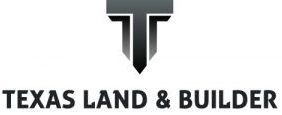When constructing a home, it’s essential to understand both building setbacks and easements, as they influence how and where you can place structures on your property. These regulations are established for safety, accessibility, and to ensure community standards are met.
Building Setbacks
Definition: A building setback is the minimum distance that a structure must be placed from a property line, street, or other defined feature, such as a neighbor’s home. Setbacks are typically mandated by local zoning laws, and they vary depending on the location (front, side, or rear of the property) and type of property (residential, commercial, etc.).
Purpose:
- Safety: Setbacks help maintain safe distances between structures and streets, ensuring clear sightlines for drivers and pedestrians, and providing space for emergency vehicles.
- Privacy and Light: By requiring buildings to be set back from property lines, setbacks help preserve privacy between neighbors and allow for natural light and air circulation.
- Community Aesthetics: Setbacks maintain uniformity and harmony in the appearance of neighborhoods, preventing overcrowding and overbuilding.
- Environmental Protection: Setbacks can protect natural resources like waterways or wetlands, creating buffer zones that help preserve ecosystems.
Examples:
- Front setback: The distance between the home and the street or road.
- Side setback: The distance between the home and the side property lines.
- Rear setback: The distance from the back of the home to the rear property line.
Easements
Definition: An easement is a legal right that allows someone else (often a utility company, municipality, or neighbor) to use a portion of your property for a specific purpose, without owning it. Easements typically remain in place when property is sold, and they limit what can be built or modified in those areas.
Types of Easements:
- Utility Easement: Allows utility companies to run power lines, water lines, sewer pipes, or other infrastructure across a portion of private land. Homeowners cannot build structures in these areas to ensure access for maintenance and repairs.
- Access Easement: Grants the right for one property owner to pass through another’s property. This might be necessary in landlocked properties or shared driveways.
- Drainage Easement: Ensures that water flows through a property in a controlled manner, preventing flooding or other issues that might arise due to natural drainage patterns.
Purpose:
- Access and Maintenance: Utility and service providers need uninterrupted access to their infrastructure for maintenance, repairs, or upgrades. Easements ensure that this access remains available.
- Drainage and Flood Control: Drainage easements protect natural water flow by keeping areas free of obstructions, preventing water from backing up and causing property damage.
- Shared Use: In cases where a property must share certain areas (e.g., driveways or paths), easements allow for legal, defined use by other parties.
Why They Are Required
Both setbacks and easements are legally enforced to protect property rights, public safety, and ensure the efficient functioning of communities.
- Safety and Accessibility: Building setbacks ensure that homes are built a safe distance from roads and neighboring properties, reducing the risk of accidents and maintaining emergency access routes. Easements allow service providers to maintain essential infrastructure like power, gas, and water lines without interruption.
- Community Planning: Setbacks and easements help maintain the visual and functional harmony of neighborhoods. Setbacks prevent homes from being built too close together, while easements ensure that essential services can reach every property.
- Preservation of Natural Resources: Easements, especially for drainage or conservation, protect environmental resources by restricting development in sensitive areas. Setbacks may also protect natural features by keeping construction away from waterways or other delicate environments.
- Legal Protection: Both setbacks and easements are enforced through local zoning laws and property deeds. Violating them can lead to legal disputes, fines, or the requirement to remove improperly placed structures. Following these rules from the beginning protects homeowners from future complications.
Conclusion
Understanding the differences between building setbacks and easements is crucial for anyone looking to build or modify a property. Setbacks ensure that structures are placed at safe, regulated distances from property lines, streets, and other homes, preserving both safety and aesthetics. Easements, on the other hand, provide legal rights to access or maintain essential services, like utilities, or to manage shared spaces and natural resources. Both are essential for protecting property rights, ensuring community safety, and maintaining the functionality of urban and rural developments.
